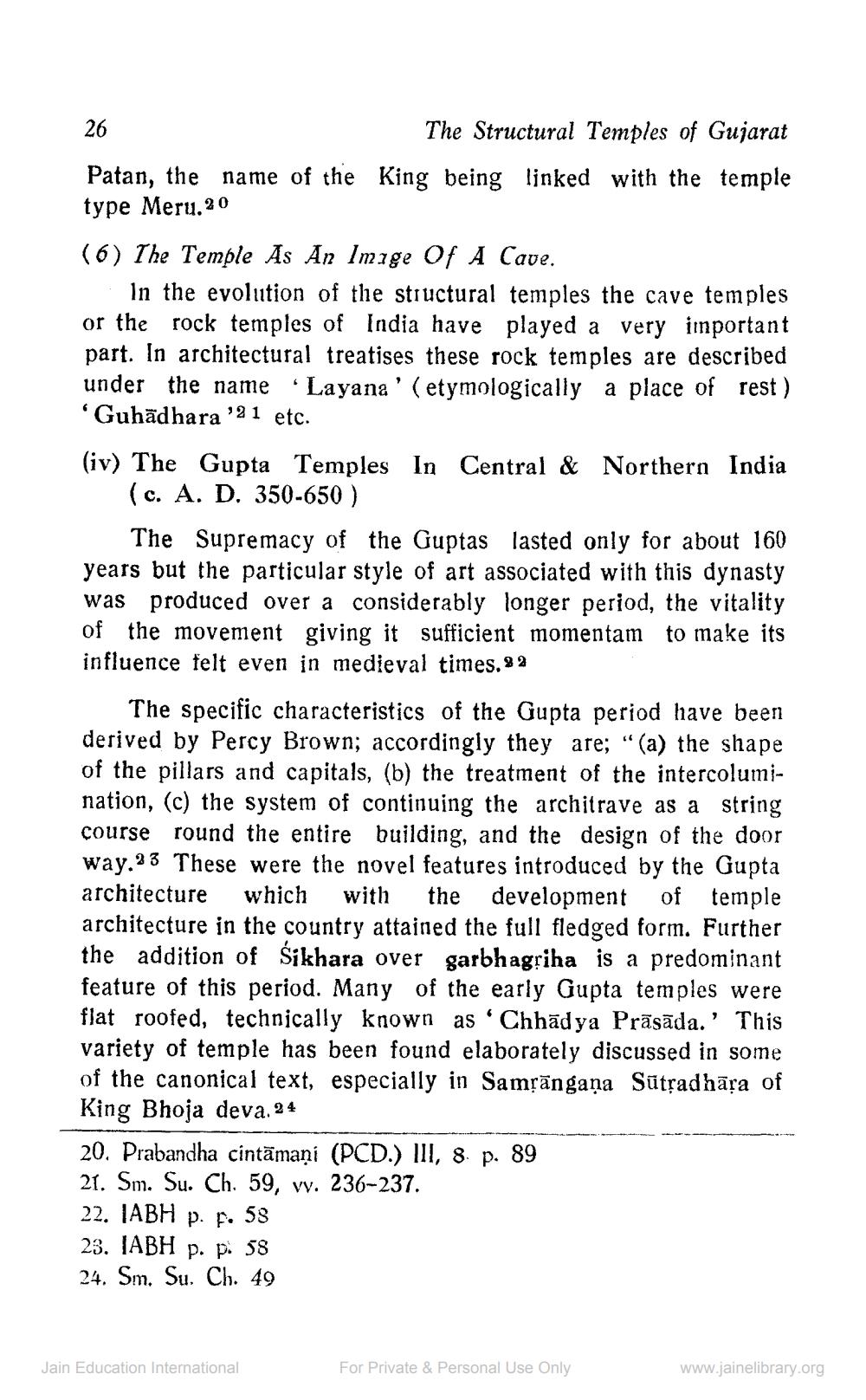________________
26
The Structural Temples of Gujarat
name of the King being linked with the temple
Patan, the type Meru, 20
(6) The Temple As An Image Of A Cave.
In the evolution of the structural temples the cave temples or the rock temples of India have played a very important part. In architectural treatises these rock temples are described under the name 'Layana' (etymologically a place of rest) 'Guhadhara '21 etc.
(iv) The Gupta Temples In Central & Northern India (c. A. D. 350-650)
The Supremacy of the Guptas lasted only for about 160 years but the particular style of art associated with this dynasty was produced over a considerably longer period, the vitality of the movement giving it sufficient momentam to make its influence felt even in medieval times. 82
The specific characteristics of the Gupta period have been derived by Percy Brown; accordingly they are; "(a) the shape of the pillars and capitals, (b) the treatment of the intercolumination, (c) the system of continuing the architrave as a string course round the entire building, and the design of the door way.33 These were the novel features introduced by the Gupta architecture which with the development of temple architecture in the country attained the full fledged form. Further the addition of Sikhara over garbhagriha is a predominant feature of this period. Many of the early Gupta temples were flat roofed, technically known as 'Chhadya Prasada.' This variety of temple has been found elaborately discussed in some of the canonical text, especially in Samṛangana Sutradhara of King Bhoja deva. 24
20. Prabandha cintamani (PCD.) III, 8. p. 89
21. Sm. Su. Ch. 59, vv. 236-237.
22. IABH p. p. 58
23. IABH p. p. 58
24. Sm. Su. Ch. 49
Jain Education International
For Private & Personal Use Only
www.jainelibrary.org




